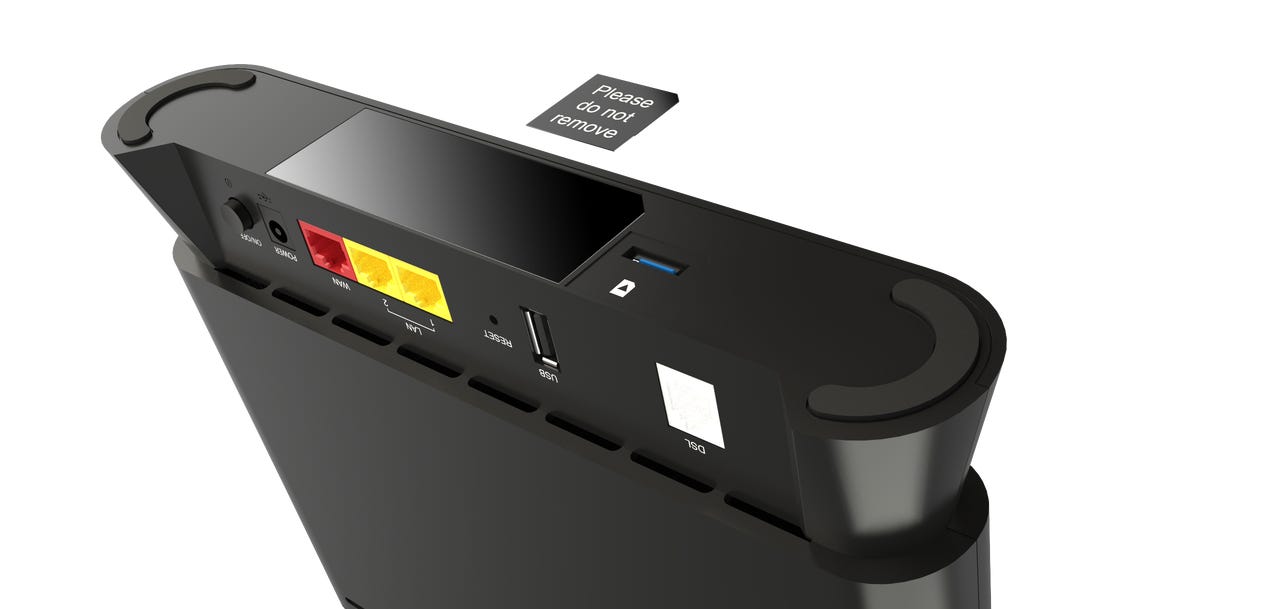Vodafone chooses NBN modem with backup 4G for NBN outages


Vodafone has announced it will be entering the NBN market with a modem capable of using the telco's 4G network for backup connectivity when waiting for the NBN to initially be connected, or when an NBN outage occurs.
The backup connection will provide maximum speeds of 12/1Mbps, which is equivalent to the slowest NBN speed tier available and also the second most popular tier after 25/5Mbps. It will be activated at sign-up and remain active for 30 days; in the case of an outage, it can be reactivated, via phone or live chat, once the telco has conducted line tests to check a fault exists in NBN's infrastructure.
Vodafone general manager of Fixed Broadband Matthew Lobb told ZDNet the 4G connection was "very much a backup service".
"[We will be] very careful not to impact the mobile network," he added.
Users of the modem will need to be within Vodafone's network coverage, and connected to any of NBN's FttX technologies, as well as HFC and fixed wireless technologies being supported.
"We have listened to people's concerns about missing out on internet access or paying out of their own pockets for mobile data while they wait for their service to be installed or repaired," Lobb said in a statement.
"They have told us that they don't care about the kind of technology their internet runs on, they just want it to work."
Last week, Vodafone announced it had expanded its 4G network with 17 new sites in Tasmania, and 15 new sites in the New England region of NSW under the federal government's mobile blackspots program.
Vodafone first announced its intention to enter the NBN market in May.
On Monday, NBN CEO Bill Morrow hit out at allegations the NBN's connectivity virtual circuit (CVC) and use of copper in its Multi-Technology Mix are to blame for Australians seeing unsatisfactory speeds when connected to the network, and instead said it was the result of an NBN "land grab" forcing retail service providers (RSPs) to cut costs somewhere.
Morrow said retailers were involved in a land grab for market share, where pricing was the focus, and not speeds or quality of service.
"If an RSP doesn't price their product high enough to recover their costs, they may be forced to cut corners that could affect the quality of the services being offered," he said.
"If an RSP isn't purchasing enough CVC capacity to offer the quality expected, that is a conscious choice to do so.
"Some RSPs are advertising broadband plans for as low as AU$29. When you consider the minimum AVC [access virtual circuit] cost them AU$24 for a 12/1 speed and they have to apportion a cost of the CVC charge, every expense must be as low as possible to make any kind of profit, if at all."
In response, Lobb told ZDNet the CVC was a "substantial disincentive" to go to higher speed tiers, as they were less profitable.
"It's effectively a speed tax," he said.
The telco has called for "urgent changes" to CVC pricing, and previously said the 12/1Mbps and 25/5Mbps speed tiers available from NBN should not be offered.
"Given taxpayers have funded a network which has been dimensioned to deliver speeds significantly faster than DSL, it is not clear that these low-speed tiers should even be on offer," Vodafone argued in its submission to the Joint Standing Committee on the NBN in April.
"Since the majority of the costs of a fixed-line network are 'fixed costs' (i.e. do not vary according to capacity or usage), once the NBN network is rolled out, there are only relatively modest additional costs to the NBN to offer higher speeds."